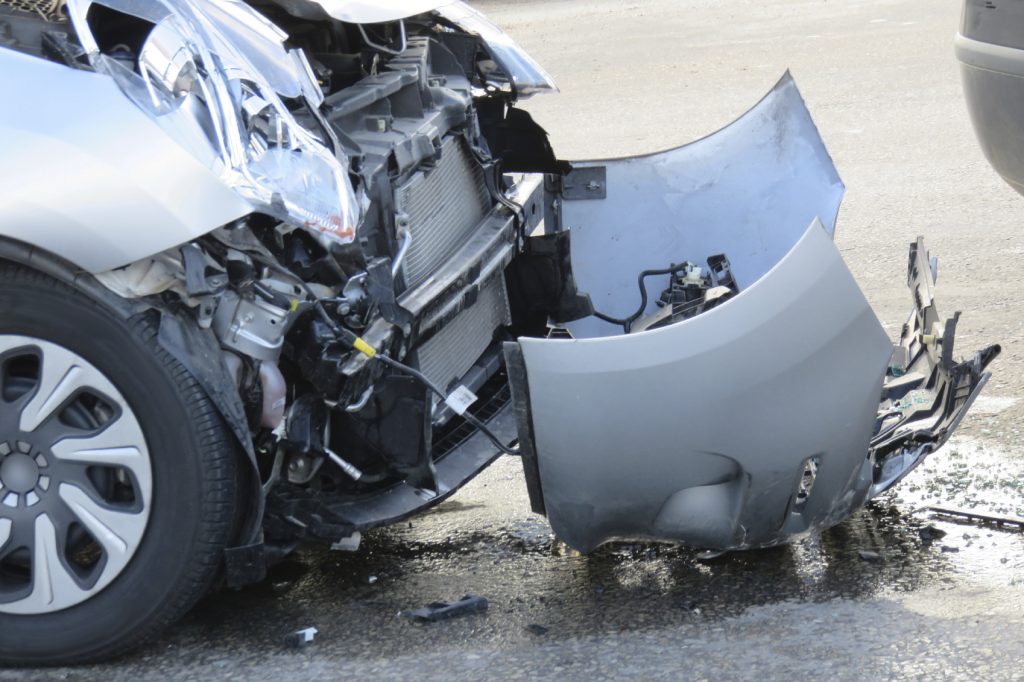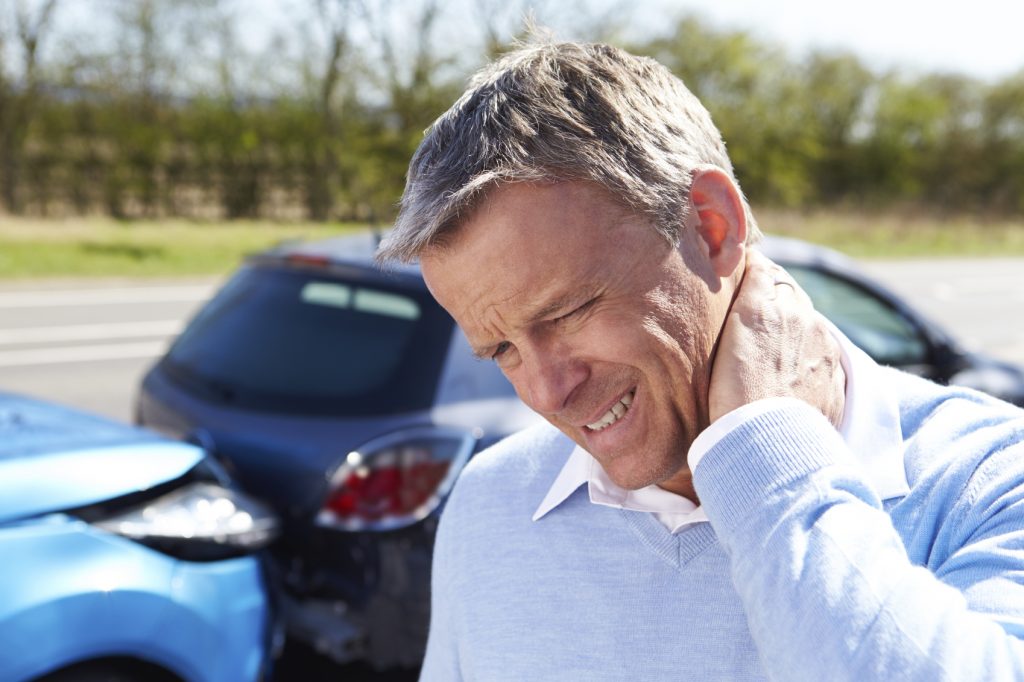4 Deadly Car Accident Types
All car accidents are frightening - when we can walk away from the crunching smash of metal and fiberglass of an auto accident, shaken but alive, we feel lucky.
The chances of walking away from a fender-bender are relatively high, but there are certain car accident types that are more likely to end in severe injury or death. In these instances, a settlement from an insurance adjuster probably won’t cover the extent of your suffering.
A personal injury lawyer is one of your best allies in determining the total lifetime damages you may need to regain a suitable quality of life following your accident. The Flood Law Firm has built our strong reputation on securing maximum compensation for our auto accident clients. We can help you and your family - whether you have suffered one of the accident types below, or another that has caused you injury and anguish.
Head–On Collisions

Head-on collisions rank first among the deadliest auto accidents. In crashworthiness tests conducted on all new automobile models, the vehicle’s crash speed is a mere 40 mph. Head-on collisions on the open road can be much faster.
Even at slow speeds, injuries from these car accident types can be catastrophic. A head-on collision may be attributed to:
- Driver fatigue
- Distracted driving
- Driver intoxication
- Faulty traffic signals
- Older drivers
- Collateral accidents
- Poor road conditions
Whatever the cause, survivors of frontal crashes may incur astronomical medical expenses and be unable to work for long periods of time.
Common Injuries in a Head-On Collision
The faster the crash speed, the more disastrous the results. The sheer destructive power of a head-on collision contains force that is almost certain to cause injury to the human body.
Lacerations, abrasions, contusions, and permanent scarring are some of the minor injuries a head-on collision could cause. Severe leg and foot injuries are common in crashes where the driver has hit a stationary object, like a street light.
Broken facial bones, soft tissue damage to the neck and shoulders, brain injury - even decapitation and death - are some of the outcomes of a head-on crash.
- Safety Tip: When shopping for a new car, be sure to check out the model’s safety rating on the Insurance Institute for Highway Safety (IIHS) and the National Traffic Safety Administration (NHTSA) websites. Studies conducted by the IIHS show that the driver of a car with a good frontal crash test rating is 46% more likely to survive a head-on collision than a model with a poor rating.
Rear-End Collisions
Tailgating is often why rear-end collisions occur. This behavior leaves little to no space between cars to avoid impact when a sudden stop occurs. It’s also illegal.
Some drivers can be extremely impatient during high traffic times. Frustrated people may forego the rules of the road, inching as close as possible to the car in front of them.
Connecticut Code Sec. 14-240 states: “No driver of a vehicle shall follow another vehicle more closely than is reasonably prudent…” Unfortunately, many of us differ on what a reasonably prudent distance actually is. Other causes of rear-end collisions are:
- Weather conditions
- Children, animals, and pedestrians crossing the road
- Vehicle breakdowns
- Police and radar guns
- Faulty brake lights
Common Injuries in Rear-End Collisions
A majority of rear-end collisions occur at speeds of less than 20 mph. The airbags in most vehicles deploys at this speed. During a crash, your seatbelt will contract in an effort to keep the body from jerking forward violently.
Although they’re designed to save your life, sometimes the airbag and seatbelt can cause injury. Chest injuries, strained muscles, and fractures are common in rear-end crashes.
If the airbag doesn’t deploy, the chances of your face slamming against the steering wheel are very high. This force of the impact could break your nose, cheek, or jaw bone – it could even detach your retina.
 Soft Tissue Injuries
Soft Tissue Injuries
Whiplash is probably the most well-known type of soft tissue injury in a car crash. Strains, sprains, or tears to the tendons and ligaments to any part of the body would be considered soft tissue damage.
The extent of these injuries is not always immediately felt by the victim after an accident. A medical professional should be able to properly diagnose and treat soft tissue injuries. For this reason, it is strongly recommended you see a doctor right after an accident - even if you feel fine at the time.
Broadside and T-Bone Collisions
T-bone, or side crashes, account for 25% of vehicle passenger deaths in the U.S., according to the IIHS. In a side-impact accident, one car hits the other from a perpendicular direction. The resulting crash may far exceed the level of force the victim’s car can safely absorb, and serious damage can ensue.
Failing to stop at an intersection is the most obvious cause of a T-bone crash. Other times they can be caused by:
- Failure to yield
- Running a red light
- Driving under the influence
- Brake or steering failure
- Improper turn across traffic lanes
- Bad weather
- Distracted driving
Buying a new car? Before 2003, most cars were not structurally designed to withstand broadside crashes. Side airbags were still optional, as opposed to standard features in newer car models. The driver of a car with a good side protection rating is 70% less likely to die in a left-side crash.
Common T-Bone Accident Injuries
The violent side-to-side and back-and-forth movements characteristic of T-bone accidents cause severe injuries and even death. The force of a side impact can drastically alter the air pressure in the vehicle, causing the thin membrane of the eardrum to pop.
The shrapnel of flying glass and metal can easily tear at delicate facial skin. The combination of seatbelt restraint and force of impact can crack the rib cage and exert more than the 7 pounds of pressure the clavicle can withstand.
Women, children, and shorter men tend to suffer severe brain injuries from side crashes. The blast of impact can also cause the soft center disk of the spine to slip under the hard vertebrae or compress the entire spinal column, resulting in excruciating pain.
Ruptured spleen, liver and kidney damage, or severe internal bleeding are frequently sustained in a broadside accident. Any internal injury - and related bleeding – can put an accident victim’s life in jeopardy.
Rollovers
A rollover crash is the stuff of nightmares. All vehicles are susceptible to rollover. However, larger cars such as SUVs, large trucks, and semis have a higher center of gravity and are more likely to have a rollover incident.
Automakers attempt to prevent rollovers by creating vehicles with electronic stability control and reinforced roof strength.
According to safecar.gov, 40% of fatal rollover crashes involved speeding, while drunk driving was responsible for half of all fatal rollover crashes. The majority of the time, the vehicle occupants were not wearing their seatbelts. Distracted driving is another major cause of rollover accidents.
The NHTSA found nearly 85% of all deaths from rollover accidents involved a single car following their daily travel routine. It is easy to be distracted in the monotony of the morning commute, but glancing away from the road for even a moment can end in disaster.
Common Rollover Injuries
More than any other type of collision, weight, and height largely influences the extent of injury you may experience in a rollover accident. Seatbelt use also plays a significant part in the extent and severity of the injuries sustained.
Internal damage, including organ, vein and nerve damage, as well as broken ribs, are common in rollover accidents.
The head and neck are most vulnerable in this type of crash. In addition to soft tissue damage, partial loss of vision, dental injury and ruptured eardrums are common.
Traumatic Brain Injury (TBI)
When the skull meets the roof of a car in mid-somersault, the result may very well be a traumatic brain injury. Brain injuries have grades of severity, but any level of TBI can cause severe emotional, physical, and personality changes.
How a Personal Injury Attorney Can Help You
When you are injured in a car accident, it’s important to seek medical attention immediately. Not only will this protect your health in the future, but medical records also provide evidence of injury and costs incurred for insurance and personal injury claims.
The Flood Law Firm has fought on behalf of hundreds of Connecticut residents injured in car accidents. We also can go after at-fault parties in a wrongful death case. We have a longstanding history of winning settlements and trials for our clients. We can put our expertise to work for you.
Let us help you pick up the pieces of your life following a car accident. Reach out to us today. We can help you understand your rights under the law as part of your free case review.
